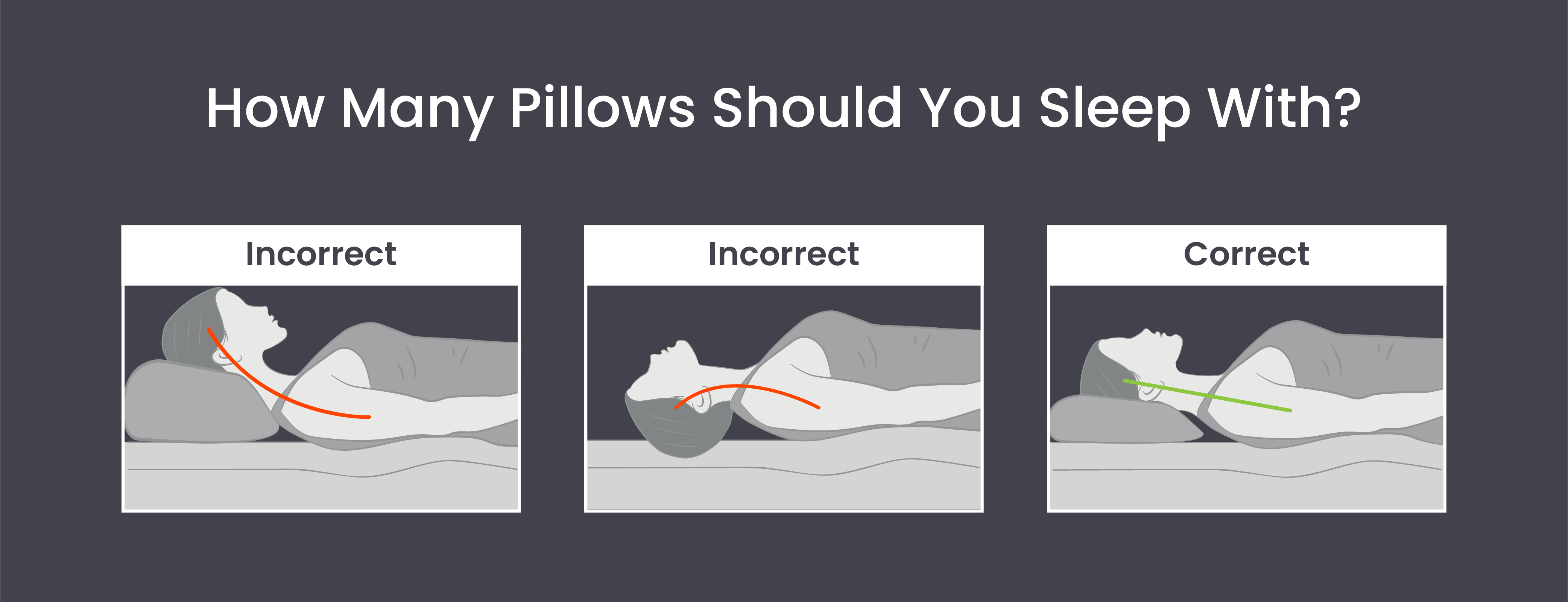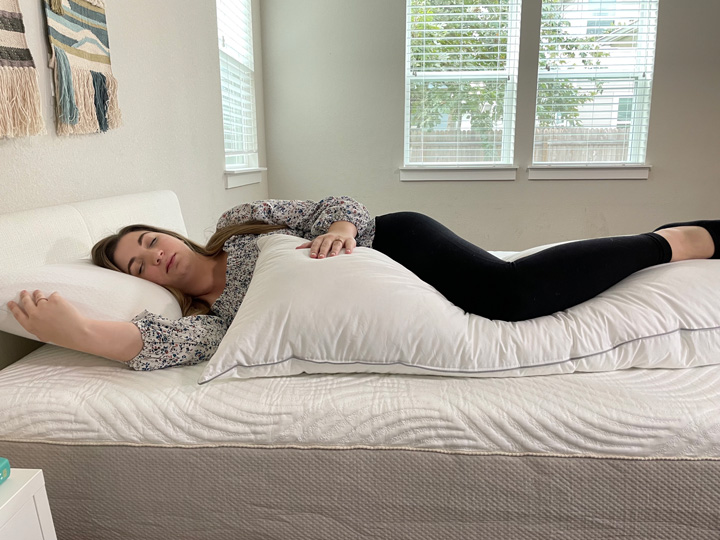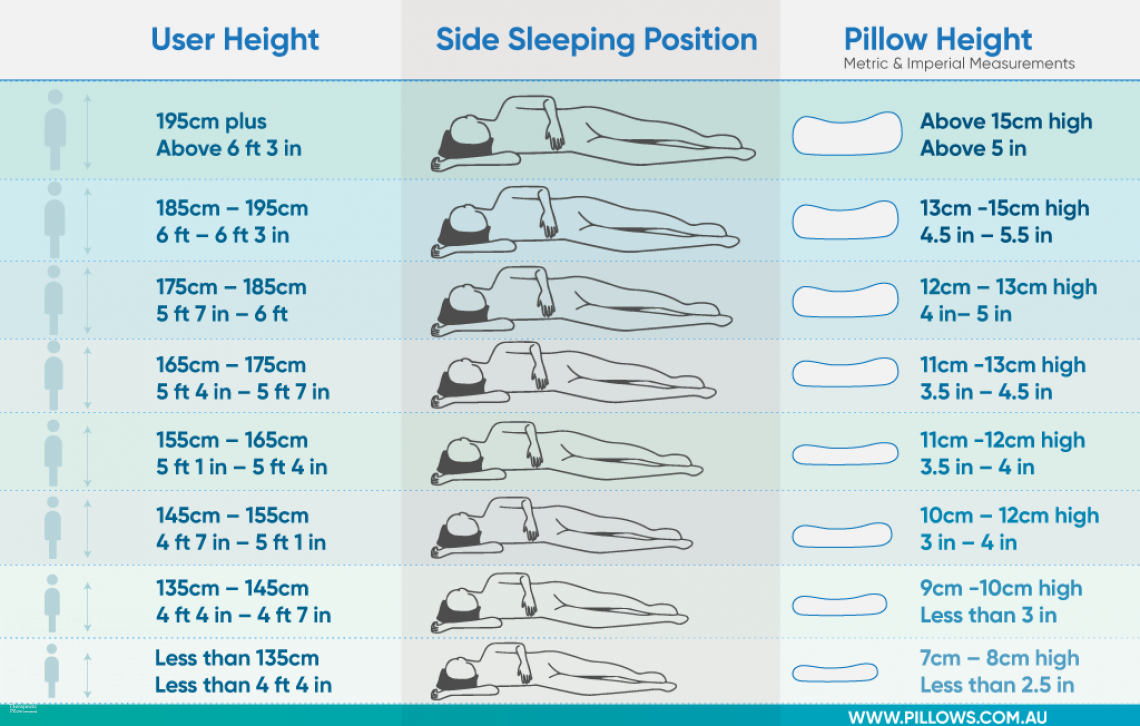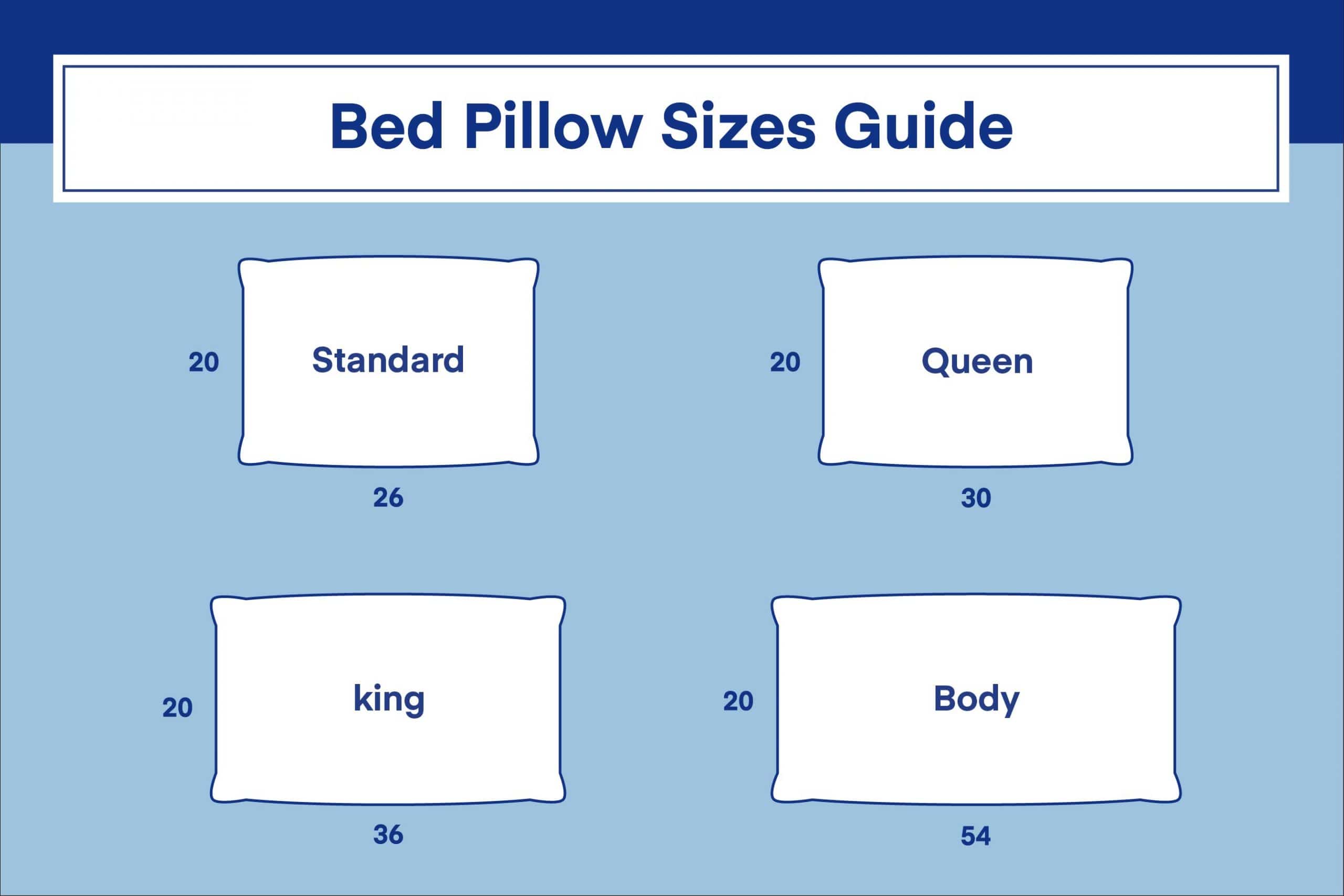How Many Pillows To Sleep With

The age-old question of how many pillows are ideal for a good night's sleep continues to spark debate and varying opinions among sleep experts and individuals alike. While personal preference plays a significant role, underlying physiological and biomechanical factors influence the optimal number for ensuring spinal alignment and restful sleep.
This article explores the diverse perspectives on pillow usage, drawing upon expert insights and available research to provide readers with a comprehensive understanding of this essential sleep accessory.
The "One Pillow" Camp
Many sleep specialists advocate for using just one pillow, primarily to maintain a neutral spinal position. A single, appropriately sized and shaped pillow can effectively support the natural curvature of the neck, preventing strain and discomfort.
According to the American Chiropractic Association (ACA), proper spinal alignment is crucial for preventing neck pain, headaches, and other musculoskeletal issues. Over-elevation of the head due to multiple pillows can lead to forward head posture, a common cause of chronic neck pain.
The ideal pillow height should fill the gap between the head and the mattress, supporting the neck without causing excessive flexion or extension. This often translates to a thinner pillow for back sleepers and a slightly thicker pillow for side sleepers.
The Case for Multiple Pillows
While a single pillow might suffice for some, others find comfort and support in using multiple pillows. This is often the case for side sleepers or those with specific physical needs.
Side sleepers often benefit from a thicker pillow or multiple pillows to maintain spinal alignment. The increased distance between the head and the mattress in this position necessitates greater support to prevent the head from tilting downwards, straining the neck muscles.
Additionally, some individuals use a pillow between their knees while sleeping on their side to further align the spine and reduce pressure on the hips and lower back. This practice is often recommended for pregnant women and individuals with lower back pain.
Furthermore, people with certain medical conditions, such as sleep apnea or acid reflux, may find relief by elevating their upper body with multiple pillows. However, it's essential to consult with a healthcare professional to determine the appropriate elevation level and ensure it doesn't compromise neck alignment.
Factors Influencing Pillow Choice
The optimal number of pillows is not a one-size-fits-all answer. Several factors influence the ideal pillow setup, including sleeping position, body type, mattress firmness, and individual preferences.
Sleeping position is perhaps the most crucial factor. Back sleepers generally require thinner pillows, side sleepers need thicker support, and stomach sleepers may benefit from using no pillow at all or a very thin one to avoid arching the neck.
Body type also plays a role. Individuals with broader shoulders may require thicker pillows to maintain spinal alignment when sleeping on their side. Heavier individuals may also need more support than lighter individuals.
Mattress firmness interacts with pillow choice. A softer mattress allows the body to sink in more, reducing the gap between the head and the mattress, and potentially requiring a thinner pillow. Conversely, a firmer mattress may necessitate a thicker pillow to provide adequate support.
Ultimately, personal preference is paramount. What feels comfortable and supportive to one person may not feel the same to another. Experimentation and adjustment are key to finding the optimal pillow setup.
Expert Recommendations and Research
While research specifically addressing the optimal number of pillows is limited, experts emphasize the importance of proper spinal alignment and personalized comfort.
Many physical therapists and chiropractors recommend seeking professional guidance to determine the most appropriate pillow setup based on individual needs and physical conditions. They can assess spinal alignment and provide tailored recommendations for pillow height, firmness, and placement.
Organizations like the National Sleep Foundation offer resources and information on sleep hygiene, including tips on choosing the right pillows and maintaining a comfortable sleep environment. They emphasize the importance of replacing pillows regularly, as they lose their support over time and can accumulate allergens.
A study published in the Journal of Manipulative and Physiological Therapeutics found that using a contoured pillow, designed to support the natural curvature of the neck, can reduce neck pain and improve sleep quality.
Conclusion
Determining the ideal number of pillows for sleep is a personalized process that requires careful consideration of various factors, including sleeping position, body type, and mattress firmness. While some individuals thrive with a single, supportive pillow, others find comfort and benefit from using multiple pillows to achieve optimal spinal alignment and pressure relief.
Ultimately, the key is to prioritize comfort and support, ensuring that the neck and spine are properly aligned throughout the night. Consulting with a healthcare professional or sleep specialist can provide personalized guidance and help individuals make informed decisions about their pillow setup.
By paying attention to these factors and experimenting with different pillow arrangements, individuals can create a sleep environment that promotes restful, restorative sleep and overall well-being. Remember, quality sleep is an investment in your health, and the right pillow setup can play a crucial role in achieving it.

















